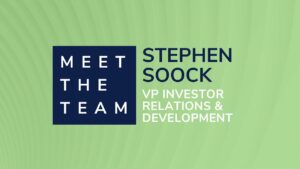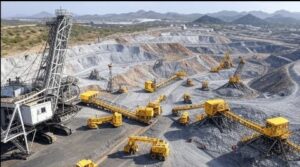CHICAGO, IL — (Marketwire) —
Tara began acquiring within the district in
- The centrally located Don Roman mill was completed in 2009 and is designed with three identical, 120 tonnes per day, independent processing circuits to provide flexibility in processing rates and to allow parallel processing of different ore types. The existing plant can be put back into production within a short time frame. Previous engineering work has confirmed that the capacity can be expanded to 2,000+ tonnes per day, over time, on the available footprint.
- The 370 acres Champinon iron ore property is advancing towards 2012 production. The host structure has been estimated, through surface mapping and sampling, to be at least 40 m wide, 1.5 km in length and open in all directions. Surface grab samples, from the high-grade zone, returned assays ranging from 62.0% to 68.9% iron ore. Initial analysis indicates the potential for favorable operating margins and substantial growth in the available tonnage.
- There are many old workings and outcrops in the area immediately adjoining the mill. Tara was mining from two silver/zinc/lead veins. Vein #1 assayed 309 g/t silver, 9% zinc, and 3% lead. Vein #2 assayed 770 g/t silver, 27% zinc, and 11% lead. Additional veins have also been discovered with one assaying 1.47 g/t gold, 400 g/t silver, 7.48% zinc, and 4.92% lead. The tonnage potential of these veins is substantial.
- There are also attractive gold prospects within the district. The best understood of these is
San Felipe , located 1.5 km from the mill. Channel samples returned an average grade of 10.06 g/t gold and 149.85 g/t silver. The structure has a known strike length of approximately 850 m and an exposed vertical height of approximately 400 m. The vein remains open both along strike and at depth. - The La Verdes gold, silver, zinc and lead project consists of eight concessions 13-18 km from the Don Roman mine and mill. The concessions have 50 m of tunnels, 14 known showings of old workings, and were being mined as late as 2010. The extracted material assayed 0.5-1.5 g/t gold, 300-600 g/t silver, 14-15% zinc, 6-8% lead, and 2.1-2.6% copper. Recent channel samples across the workings assayed similar grades. The combined strike length of some of these structures have already been traced to over 5 km. A road from the groupings, to the Don Roman mill, has also been completed.
- The Centenario gold and iron concessions are located 9 km to the north and have several high-grade mineral systems identified. Samples to date returned two gold/copper systems assaying 17 g/t gold, 7% copper and 350 g/t silver; and two silver/lead/zinc systems assaying 400 g/t silver, 8% lead and 9% zinc. One structure has been traced for 5 km in strike, is approximately 5 m wide with surface sampling returning 350 g/t silver, 9% zinc, and 8% lead.
- The El Oro iron ore project is also located within 10 km of the Don Roman mill. El Oro has previously sampled as high as 60+% iron ore, 6 g/t gold and 4% copper. El Oro has the potential for substantial tonnage within the aggregate structure length of 5+km identified with an expected depth of 150+ m.
Mineralization at the district falls into two categories. The first is the skarn type mineralization and the second type is moderately to steeply dipping gold-bearing quartz veins in shear zones. Zinc skarns commonly occur in continental settings associated with subduction and extensional faulting, which is the case in
The Don Roman district mineralization appears to fit these criteria in terms of metal grades and in that it is peripheral to a strong porhpyry system and is likely genetically related to the nearby
About
Safe Harbor Statement under the Private Securities Litigation Reform Act of 1995: The statements contained herein which are not historical are forward-looking statements that are subject to risks and uncertainties that could cause actual results to differ materially from those expressed in the forward-looking statements, including, but not limited to, certain delays beyond the Company’s control with respect to market acceptance of new technologies or products, delays in testing and evaluation of products, and other risks detailed from time to time in the Company’s filings with the

















